That bone-cracking thud isn't easily forgotten. Nor are bird-window collisions easily prevented. A team of faculty and students is using science, engineering and art to devise a solution.
Tunk. Tunk. Tunk. Neon-green tennis balls strike the double-paned glass that fronts the atrium of the J.R. Noblet building at Michigan Technological University’s School of Forest Resources and Environmental Science (SFRES). Shot from a tennis ball cannon at varying speeds, the balls model the impact of bird-window collisions. They weigh about the same as a brown-headed cowbird, but bounce off unharmed, rolling into the parking lot. Not so for the birds who strike your picture window at home, outside your office with a view, or in public venues where generous expanses of glass allow us to view the outdoors, but all too often mislead birds into seeing a reflection or an open gap where a deadly obstacle awaits.
The ball test is an important piece of the research needed for Michigan Tech's Wireless Communication Enterprise team to develop an affordable home sensor to help reduce the number of bird-window collisions, which currently average two per U.S. home per year.
During spring and fall migration, an average of six birds a day die on the Michigan Technological University campus, a statistic that mirrors the millions of birds — up to a billion — who die in the U.S. each year in window collisions.
Such extraordinary numbers alarm biologists and may have consequences for the viability of many songbirds, says ornithologist David Flaspohler, SFRES professor and director of undergraduate studies, who is working with the Enterprise team.
Students Phillip Cauley, Marcus Stojcevich and Cole Kendall are conducting the experiment. The team's prototype of an internet-controllable circuit breaker is connected to test sensors in different shapes and sizes, placed on the glass. The tiny, window-mounted sensor detects vibration in the glass and sends a wireless signal to a laptop computer that registers each strike.
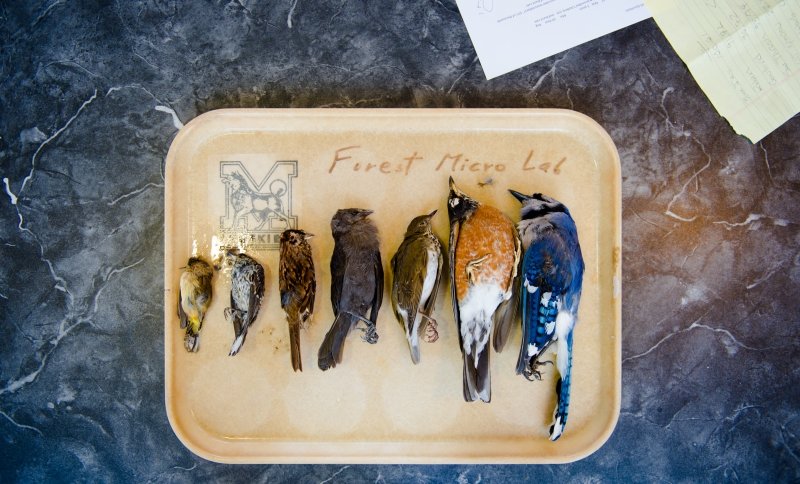
On a nearby table, a tray of birds pulled from a specimen storage freezer are a graphic and poignant reminder of the grim statistics. Blue jay, American robin, cowbird, Swainson’s thrush, white-throated sparrow, palm warbler … some are road kill, but many are window-collision casualties. People bring the birds to Flaspohler for use in teaching and research. It's a helpful practice, because specimens in these parts need to be collected rapidly, before they're consumed by the many scavengers in the Keweenaw food chain. (Unlike urban areas, Flaspohler remembers seeing bird skeletons as a boy, where they were piled in the bushes around skyscrapers in downtown Chicago.)
"The more obstacles you put in the landscape, the more potential there is for birds to collide with them. There's a growing recognition of the problem."
In 2017, students in the Michigan Tech chapter of the Wildlife Society studied 10 University buildings; three-quarters of the collisions happened at the Dow Building.
At 58 grams, the weight of a tennis ball is close to a 35-gram brown-headed cowbird, said Flaspohler. "A fast-flying cowbird may give the same reading as a slower (75-gram) robin," he said. "ID'ing the bird by the signature of the hit would be interesting but much harder. Today, that's not our goal."
The goal is a device that would sell for about ten bucks, which a homeowner could use to find out which windows of the house are responsible for most of the bird collisions — and then take action to address the specific hot spots using localized window treatments. The collective data could also be used to create heat maps of high- and low-collision areas, which could lead to more bird-friendly building sites and designs.
An Experiment with Impact

Cauley, a third-year electrical engineering major, records video outdoors. Flaspohler is the ball shooter. On the other side of the window, Kendall, a fourth-year computer engineering major, monitors the impact readings; Stojcevich, a fourth-year software engineering major, records them in a notebook.
"The sensor generates a voltage based off the vibration," explained Kendall. "We're looking at the range of values for the different kinds of sensors — how hard they hit, where they hit."
"One hundred sixty-four — 110, 169, 100, 132." Stojcevich reads off the numbers as Flaspohler peppers the windows. The hits are stronger than he expected, on average in the 140-190 range. "We want to know what we can set the threshold at, and be confident," Stojcevich said. While a snowball might fool the sensor, for example, getting accurate data means differentiating between a bird-hit and a tree-branch scrape.
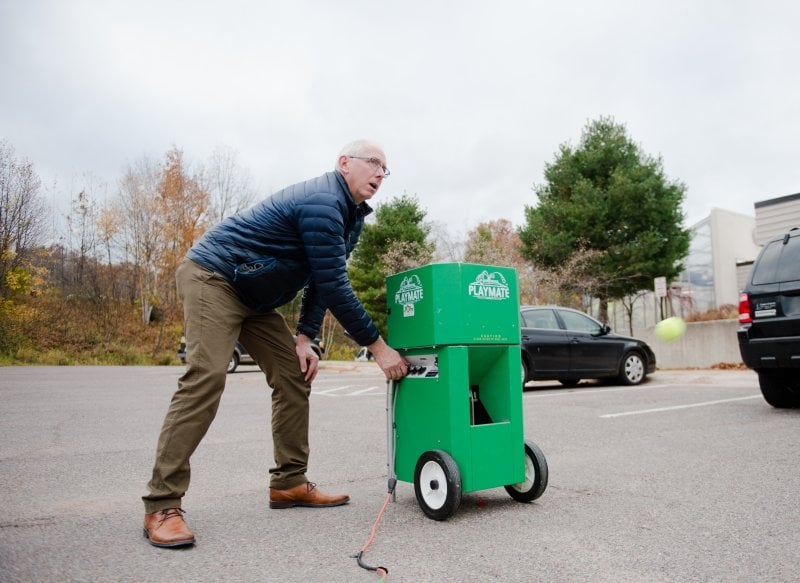
Flaspohler aims the tennis-ball shooter at different parts of the windows: corners to dead center. It's the first time the team has been able to use a fixed window. The first phase of the design took place last year; students previously performed impact tests on an unmounted double-paned window provided by the University facilities department.
Keep 'Em Flyin,' Keep the View
Birds can't see glass. They're fooled by landscape reflections, interior greenery or habitat glimpsed around corners or on the other side of passageways. Migratory birds are most at risk for collisions because they pass through novel neighborhoods as they travel from northern breeding grounds to southern wintering grounds or vice versa. Only about half of all songbirds, including warblers, sparrows, vireos and tanagers, successfully complete a single round-trip passage from where they emerged from an egg to their wintering grounds and back. Windows aren't the only threat, but they're a major contributor to mortality.
There are plenty of window-treatments on the market, ranging from tape to shutters, that literally mask the problem. But that creates another problem. "People don't like to block their views," Flaspohler said. “That glass is there for a reason, so people are reluctant to modify it in ways that can even partially obstruct the view.”
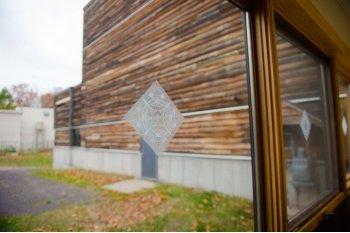
Selectively placed art on windows with a high number of strikes can be a win-win. Sensors detect where birds are hitting, and allow for focused mitigation, rather than covering every window.
"If we can test, then we know, 'oh, in your northeast corner — that's the hot spot for bird collisions," said Lisa Gordillo, visual and performing arts (VPA) assistant professor, and project leader since the initiative began in 2014.
The project is the brainchild of 2012 alumna and former Michigan Tech researcher Amber Roth. "Amber asked my students if we would like to do something to address this problem," said Gordillo, who continues to challenge her design students and others to develop solutions, including window designs, sensors, glass etching and community engagement projects to protect migratory birds.
Ecologists, Engineers, Entrepreneurs
The program's history is a case study in the kind of team science that takes place at Michigan Tech, encompassing VPA, SFRES, Department of Materials Science and Engineering and Department of Electrical and Computer Engineering, the Enterprise team, advised by senior lecturer Kit Cischke, and community educators.
Gordillo and Flaspohler also worked with Amy Lark, an assistant professor of science education, cognitive and learning sciences, to develop and evaluate community learning opportunities.
Gordillo said Stephen Kampe, a professor and chair of the Department of Materials Science and Engineering, made department labs available to create prototypes of the etched-glass designs her students developed. The prototypes were tested on the skywalk between J.R. Van Pelt and Opie Library and the Rekhi Building.
Terry Sharik, former SFRES dean, was always supportive of arts and sciences partnerships, Gordillo said. "He frequently welcomed my arts and design classes to display our samples and early projects." The partnership continues today, thanks to current dean Andrew Storer and VPA Department Chair Jared Anderson.
Even the athletic department is in on the project— Michigan Tech Tennis Head Coach Kevin Kalinec lent the tennis ball cannon for the experiment.
"Tech is the kind of place where this kind of innovative and creative collaboration can happen."
Results of the prototype tests will be presented at the 2019 Design Expo, the annual showcase for Enterprise teams and Senior Design Projects. The future for the initiative to end bird-window collisions may also include a quest for grant funding, said Gordillo.
The team has collected the data it needs. Students and faculty pack up in the fading light of a fall evening. It's time to return the specimens to the freezer. Gordillo gently cradles a black-and-white warbler in her cupped hands.
Hope, Emily Dickinson wrote, is the thing with feathers. This project also brings hope for the things with feathers, that they may fly freely and without harm through an increasingly complex landscape.
Michigan Technological University is an R1 public research university founded in 1885 in Houghton, and is home to nearly 7,500 students from more than 60 countries around the world. Consistently ranked among the best universities in the country for return on investment, Michigan's flagship technological university offers more than 185 undergraduate and graduate degree programs in science and technology, engineering, computing, forestry, business, health professions, humanities, mathematics, social sciences, and the arts. The rural campus is situated just miles from Lake Superior in Michigan's Upper Peninsula, offering year-round opportunities for outdoor adventure.
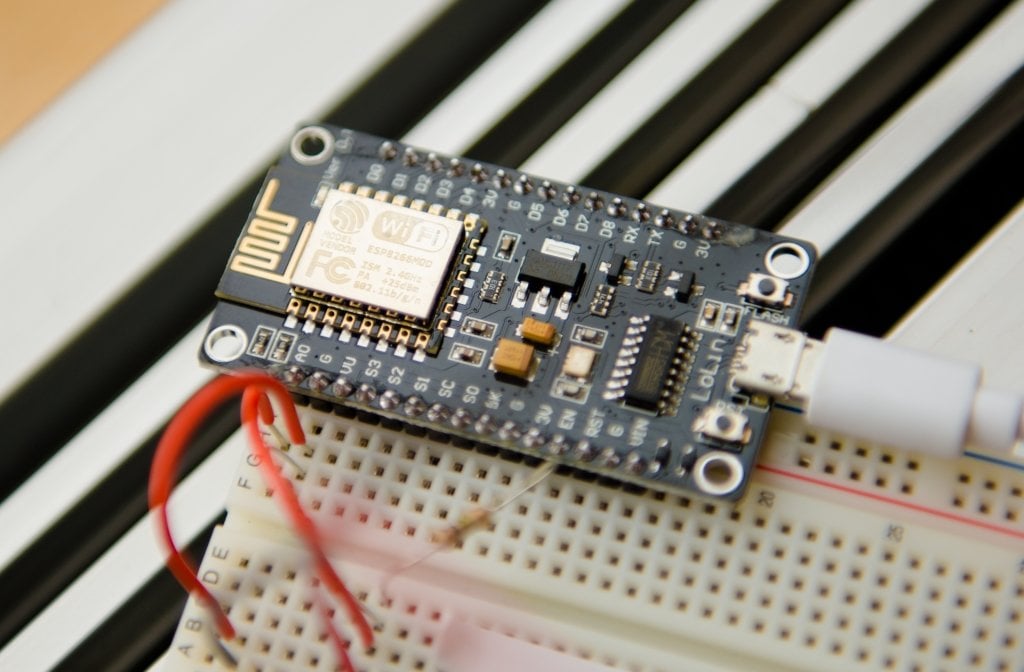


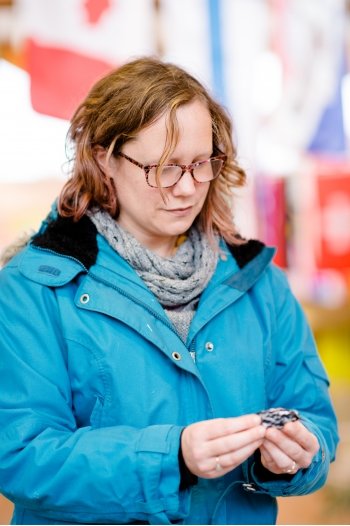

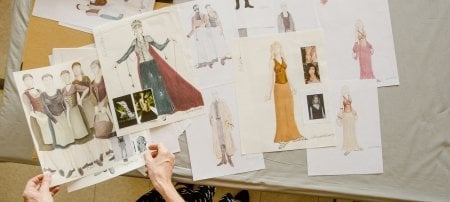
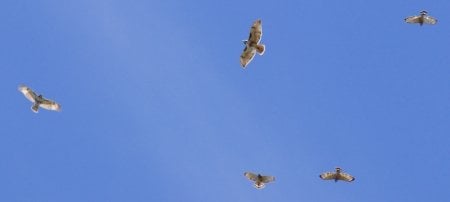

Comments